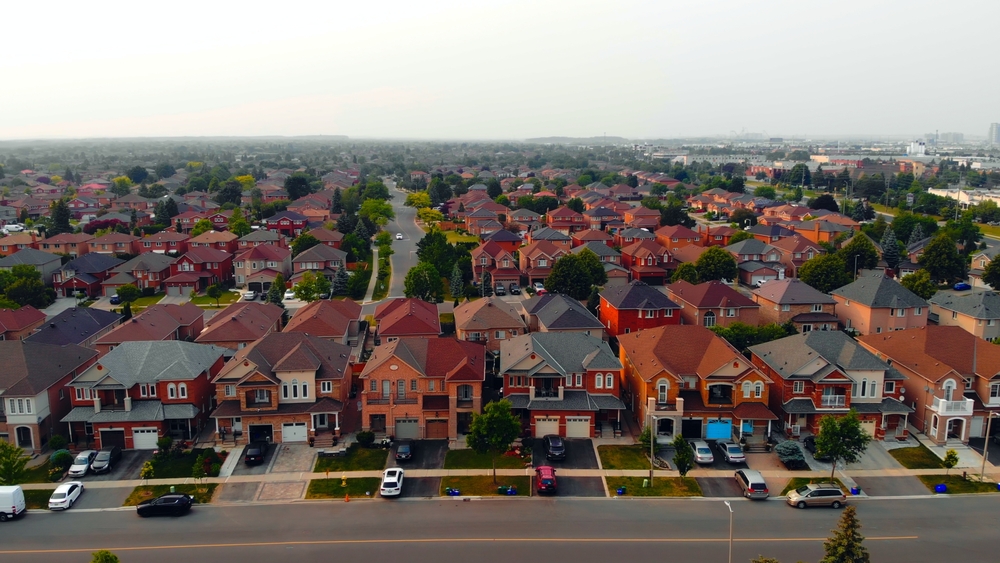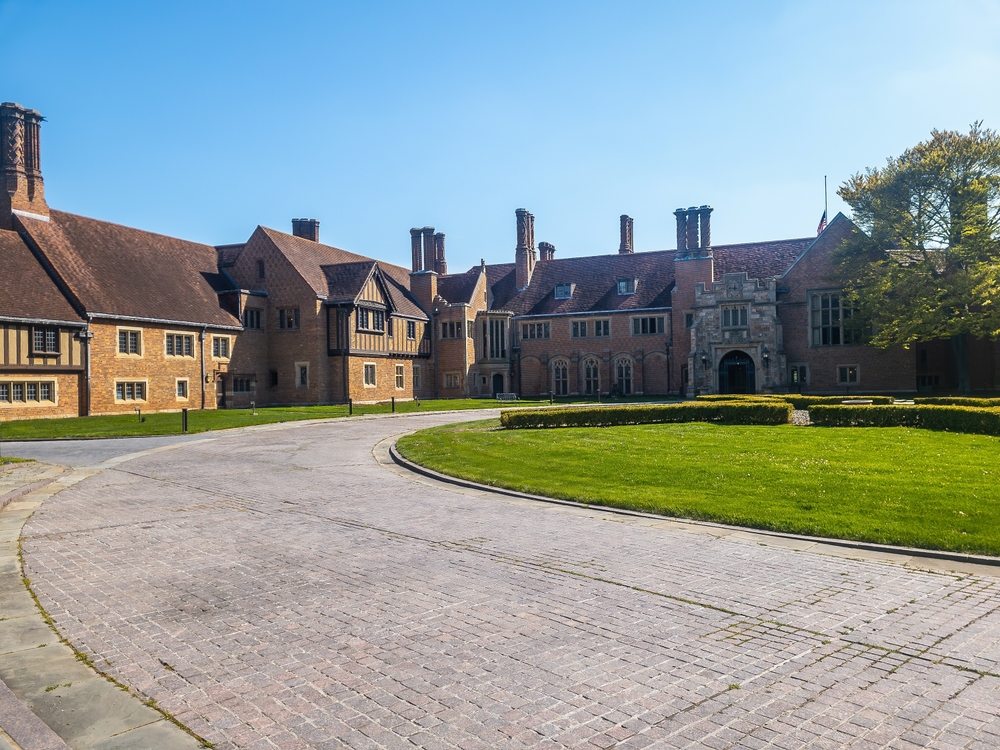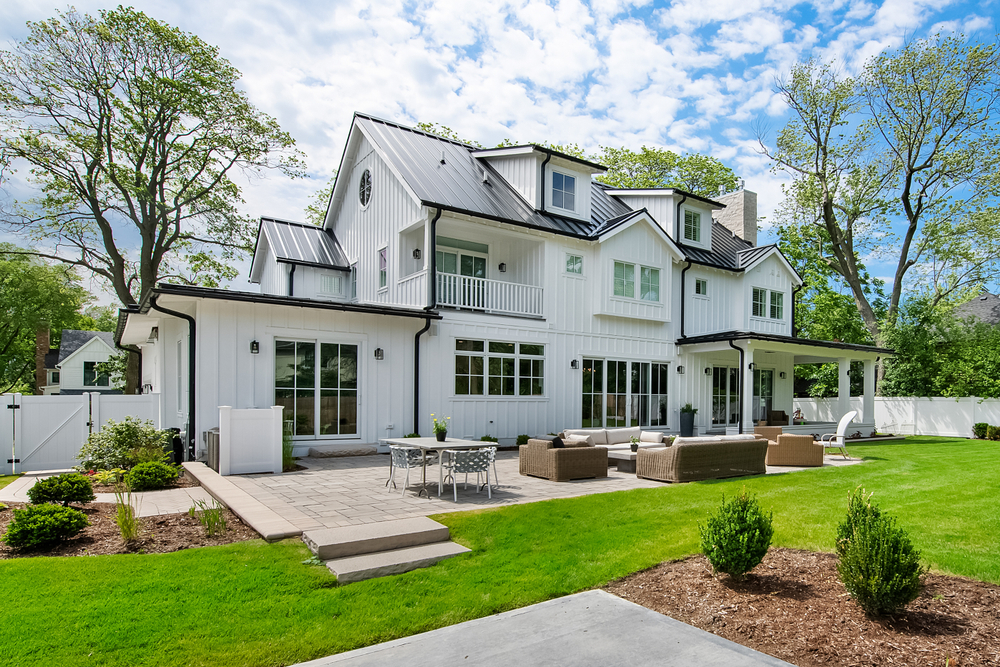Purchasing a home is a significant financial commitment, and in certain U.S. states, this decision may not yield the expected returns due to various economic and environmental factors. Here are 15 states where buying a home could potentially backfire financially:
1. California: High Costs and Environmental Risks
California’s allure is undeniable, but its high cost of living poses challenges for homeowners. The state’s susceptibility to wildfires and droughts not only threatens property but also leads to increased insurance premiums. Additionally, areas like the Bay Area have seen housing prices soar due to the tech boom, making affordability a growing concern. These factors combined can strain homeowners’ finances. What’s fascinating is that these risks have led many to reconsider purchasing property in some of the most desirable areas. The financial burden of living in California is compounded by the constant threat of natural disasters. According to Business Insider, State Farm recently requested a 22% rate hike for homeowners to cover wildfire-related damages, reflecting the escalating costs of climate risks.
Rising insurance costs and the increasing price of housing make it difficult for many to achieve long-term financial security. These challenges make homeownership less financially viable in the Golden State. Flood risks are also expected to surpass wildfire risks by 2050, as noted by Investopedia, further complicating the outlook for prospective buyers.
2. Florida: Climate Vulnerabilities and Rising Costs
While Florida’s sunny climate attracts many, its exposure to hurricanes and rising sea levels presents significant risks. Homeowners often face escalating insurance costs and potential property damage from natural disasters. These environmental challenges can lead to unexpected financial burdens for residents. In some areas, these risks also cause property values to fluctuate, making investments less stable. What’s surprising is that despite the high risk of property damage from hurricanes and flooding, home prices continue to rise in some parts of the state.
The escalating costs of property insurance and the need for extensive property repairs can lead to long-term financial strain. According to the Consumer Financial Protection Bureau, climate risks like flooding and hurricanes are increasingly critical factors for homeowners in Florida, impacting affordability and long-term housing stability. These growing vulnerabilities make Florida an especially risky state for homebuyers seeking financial security.
3. Illinois: Elevated Taxes and Economic Pressures

Illinois grapples with some of the nation’s highest property taxes, adding a substantial financial burden on homeowners. Cities like Chicago face economic challenges, including budget deficits and service cuts, which can affect property values and quality of life. These economic strains may make homeownership less financially rewarding in the long term. High property taxes can erode the financial benefits of owning a home in Illinois.
Interestingly, while Illinois offers urban opportunities, such as in Chicago, the state’s high tax rates and economic volatility discourage many from purchasing homes. The economic pressures, coupled with the high costs of living, make it difficult for many to accumulate wealth through real estate. According to Illinois Policy, uncertainty over tax policies and rising property taxes contribute to weak housing demand and lagging growth in home values across the state.
4. Louisiana: Environmental and Economic Challenges
Louisiana’s susceptibility to hurricanes and flooding poses significant risks to property and personal safety. These environmental threats often result in higher insurance premiums and potential property damage. Coupled with slower job growth and economic diversification, these factors can make homeownership a less attractive investment. For many, the financial stability that homeownership provides is undercut by these persistent threats.
What’s unique about Louisiana is that while it has a rich culture and vibrant cities, the state’s environmental risks make long-term investment in real estate uncertain. Homeowners in flood-prone areas often face huge costs for insurance and repairs, while also dealing with the threat of property devaluation after disasters. According to the American Security Project, Louisiana faces a unique suite of challenges, including land subsidence, wetland loss, and rising sea levels, which exacerbate risks to property and economic stability.
5. New Jersey: High Taxes and Economic Shifts
New Jersey’s high property taxes are a well-known financial challenge for homeowners. The state has also experienced an exodus of major corporations, impacting job availability and economic stability. Additionally, significant congestion and high health insurance premiums add to the financial strain, making homeownership potentially less rewarding. Despite its proximity to major urban centers, the cost of living in New Jersey can overwhelm new homeowners.
What’s surprising is that, despite being in the Northeastern U.S., New Jersey has seen an outflow of residents in recent years due to the increasing costs of living. High taxes, along with an unstable job market and the cost of healthcare, add to the burden of homeownership. Homebuyers in New Jersey may find themselves struggling to make ends meet, even in the face of rising property values. These financial pressures may outweigh the benefits of owning a home in the state.
6. New York: Elevated Costs and Aging Infrastructure

Beyond the high property taxes and cost of living, New York faces challenges with aging infrastructure, leading to daily inconveniences. The shift to remote work has reduced the necessity of living near urban centers, prompting many to relocate, which can affect property values. These factors may influence the financial benefits of homeownership in the state. The high costs of living in New York make it difficult for homebuyers to gain equity or financial stability.
What’s surprising is that even in desirable areas, homebuyers in New York may find themselves financially strained due to the rising cost of living. The state’s aging infrastructure and high taxes make the overall experience of homeownership less appealing. Furthermore, New York City’s crowded housing market is often difficult to navigate for first-time homebuyers, leading to increased competition and inflated prices. Homeownership in New York is challenging, both financially and practically, due to these systemic issues.
7. West Virginia: Economic Decline and Depopulation
West Virginia’s economy has been adversely affected by the downturn of the coal industry, leading to job losses and depopulation in certain areas. This decline results in reduced demand for housing, making it challenging for homeowners to sell properties at favorable prices. These economic conditions can hinder the financial advantages of owning a home in the region. Depopulation also reduces the value of real estate, making it harder to gain equity.
What’s unique about West Virginia is that, despite its natural beauty, the state is struggling with a shrinking population and limited economic opportunities. The decline of the coal industry has left many residents without stable jobs, and the housing market has been slow to recover. This economic stagnation makes homeownership a risky venture in the state. Without a vibrant job market and population growth, homebuyers may struggle to see a return on their investments in West Virginia.
8. Alaska: High Costs and Isolation
While Alaska’s rugged beauty and outdoor lifestyle may attract some, its remoteness and high living costs can be prohibitive for homeowners. Property prices in certain parts of Alaska are inflated due to the state’s geographic isolation, which drives up construction and maintenance costs. Additionally, limited access to services and goods in more remote areas adds financial strain. These factors make owning a home in Alaska a significant financial challenge.
Interestingly, the state’s dependence on oil revenues also makes its economy volatile. When oil prices fluctuate, so too does the state’s economic stability, which can have a direct impact on property values. Homebuyers in Alaska may find themselves facing an uncertain financial future due to the state’s isolated nature and reliance on an unstable industry. The high costs and economic volatility make Alaska a difficult place for long-term financial investment in real estate.
9. Connecticut: High Costs and Stagnant Growth
Connecticut has some of the highest property taxes in the U.S., adding to the financial burden of owning a home in the state. The state also faces stagnant job growth and economic challenges that limit opportunities for financial advancement. These issues can lead to property devaluation over time, making it difficult for homeowners to build wealth through real estate. The high living costs and limited economic opportunities make Connecticut less financially attractive for homebuyers.
What’s surprising is that even in affluent areas, Connecticut struggles with economic stagnation. While the state boasts beautiful homes and close proximity to New York City, the high costs of living and high taxes deter many from purchasing property. The limited job market and slow economic recovery may result in decreased property values, making homeownership a risky financial decision. These factors contribute to Connecticut’s reputation as a challenging place for prospective homeowners.
10. Nevada: Boom and Bust Cycles
Nevada’s real estate market has a history of extreme boom-and-bust cycles, making it a risky state for homeownership. During the housing bubble, property values soared, only to plummet dramatically during the financial crisis. While home prices are recovering, they remain highly susceptible to market volatility. These fluctuations make Nevada an unpredictable place to buy a home if you’re looking for long-term financial stability.
What’s surprising is that even with the state’s growing popularity, the housing market still experiences instability. Homebuyers may face challenges in selling their properties if market conditions turn unfavorable. This volatility, coupled with the state’s reliance on tourism and gaming industries, creates an uncertain environment for long-term investments in real estate. Buying a home in Nevada requires careful consideration of the market’s unpredictable nature.
11. Michigan: Declining Cities and High Taxes
Michigan faces challenges in certain areas with declining cities and high property taxes. While places like Detroit have experienced revitalization, many regions still struggle with economic hardship and depopulation. High taxes further reduce the financial benefits of owning a home, making it difficult to build wealth. These issues contribute to the financial risks of homeownership in Michigan.
What’s interesting is that, despite Michigan’s natural beauty and affordable housing in some areas, the state’s economic struggles make it difficult for many homeowners to see financial gains. The decline of manufacturing and other key industries has led to job loss and population decline in several cities. This, combined with the high tax burden, reduces the likelihood of significant property value appreciation. Homeownership in Michigan can be a financial gamble in many regions due to these challenges.
12. Arkansas: Rural Decline and Economic Disparities
Arkansas faces economic disparities between urban and rural areas, which affect property values. In rural regions, depopulation and limited job opportunities can lead to stagnant or declining property values. Even in urban areas, economic challenges limit the potential for long-term growth in home values. These factors make buying a home in Arkansas potentially less profitable for those looking for financial security.
Interestingly, the state’s rural areas face higher risks of property devaluation due to the lack of economic opportunities. While the cost of living may be lower, the slow pace of economic development makes it difficult for homeowners to realize financial gains. The limited job growth and economic struggles further hinder Arkansas’ real estate market, making homeownership a less favorable financial decision. Buyers must consider these factors before purchasing property in the state.
13. Ohio: Stagnant Wages and Economic Decline
Ohio has experienced stagnant wages and economic decline in certain regions, particularly in cities reliant on manufacturing industries. These economic challenges have led to reduced demand for housing, causing property values to stagnate or decrease. Additionally, high property taxes and limited job growth can hinder homeownership’s financial benefits. These economic pressures make Ohio a less attractive state for potential homeowners looking for long-term stability.
What’s surprising is that while Ohio offers affordable real estate, the state’s economic struggles make it difficult for homeowners to realize financial gains. The decline of manufacturing and other industries has left certain areas in economic disarray. Property values are stagnant in many parts of the state, and homebuyers may find it hard to sell their properties at a profitable price. These factors make Ohio a less ideal location for long-term homeownership.
14. Montana: Rising Prices and Limited Job Opportunities
Montana has seen a rise in home prices, but its limited job market and high cost of living make it difficult for many to afford homeownership. Property values have soared due to increased demand, but the state’s economic conditions remain relatively stagnant. Limited job opportunities in certain regions further complicate the financial viability of buying a home. These challenges can hinder homeowners’ ability to build equity or gain long-term financial benefits.
What’s surprising is that, despite Montana’s picturesque landscapes, the state’s economy has not kept pace with the rising property prices. The job market remains limited in rural areas, making it difficult for homeowners to see financial returns. Homeownership in Montana may seem appealing at first, but its high cost of living and economic challenges can lead to financial instability. Buyers must carefully evaluate these factors before purchasing property in the state.
15. South Carolina: Vulnerability to Natural Disasters
South Carolina’s susceptibility to hurricanes and flooding poses significant risks to property owners. Coastal areas, in particular, face higher insurance premiums and the threat of property damage. These environmental risks can add financial stress to homeowners, especially in areas prone to frequent storms. The possibility of storm-related damage makes it difficult for homeowners to predict their long-term financial stability.
What’s surprising is that despite the charm and beauty of South Carolina, the state’s vulnerability to natural disasters makes real estate a risky investment. Rising sea levels and the increasing frequency of hurricanes can lead to costly repairs and a potential loss in property value. Homebuyers in South Carolina should carefully consider these risks before committing to a home purchase. These environmental factors can make homeownership a financial burden in the long term.
This article is for informational purposes only and should not be construed as financial advice. Consult a financial professional before making investment or other financial decisions. The author and publisher make no warranties of any kind.





















